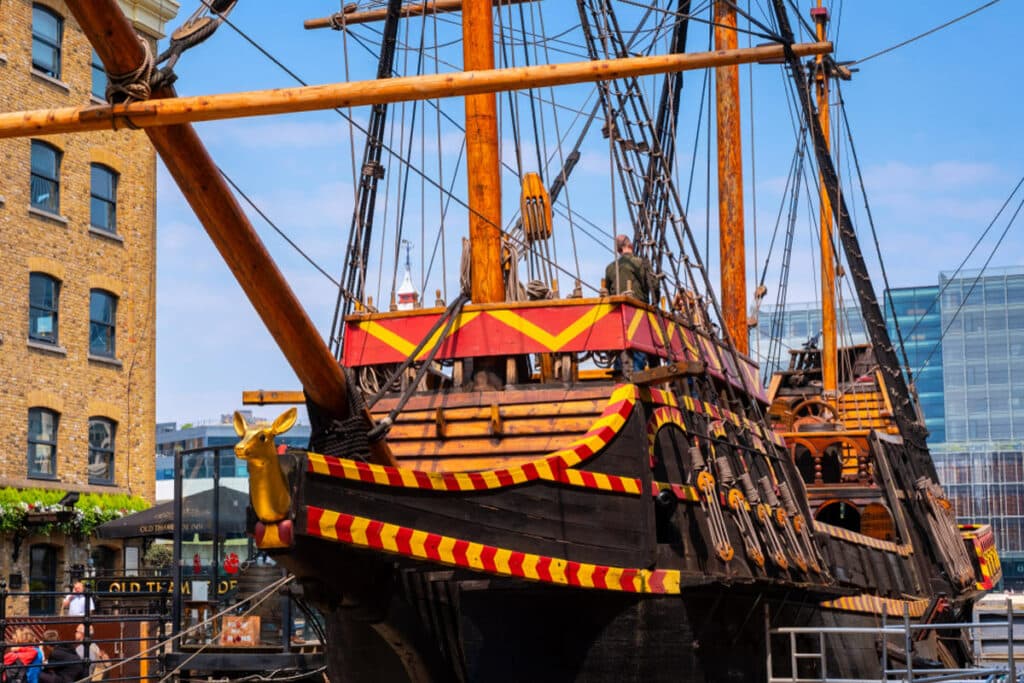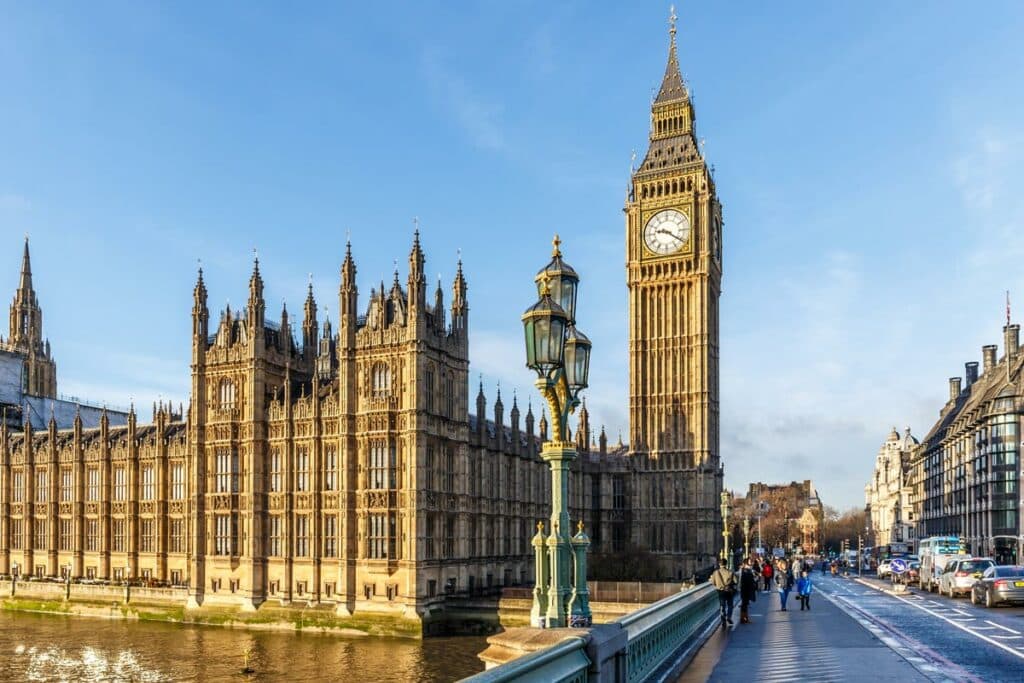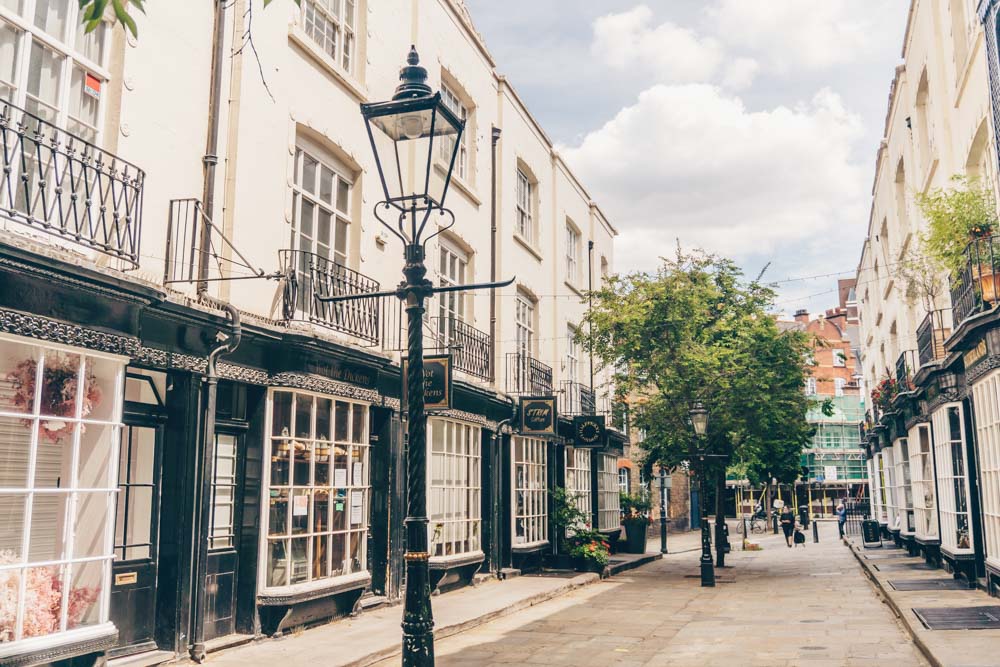We explore the history of The Golden Hinde and what makes it so special.
You must have seen that stunning galleon docked near London Bridge. You know, just on from Winchester Palace. That’s The Golden Hinde, a replica of the ship that Sir Francis Drake, England’s most famous seafarer (read: pirate) used to make his circumnavigation of the globe.
There is, as with pretty much all these weird and wonderful things you can find in London, a fantastic story to go with it. It’s one that involves danger, political intrigue and an unhealthy amount of ambition. Let’s get stuck in.
Why Visit The Golden Hinde?
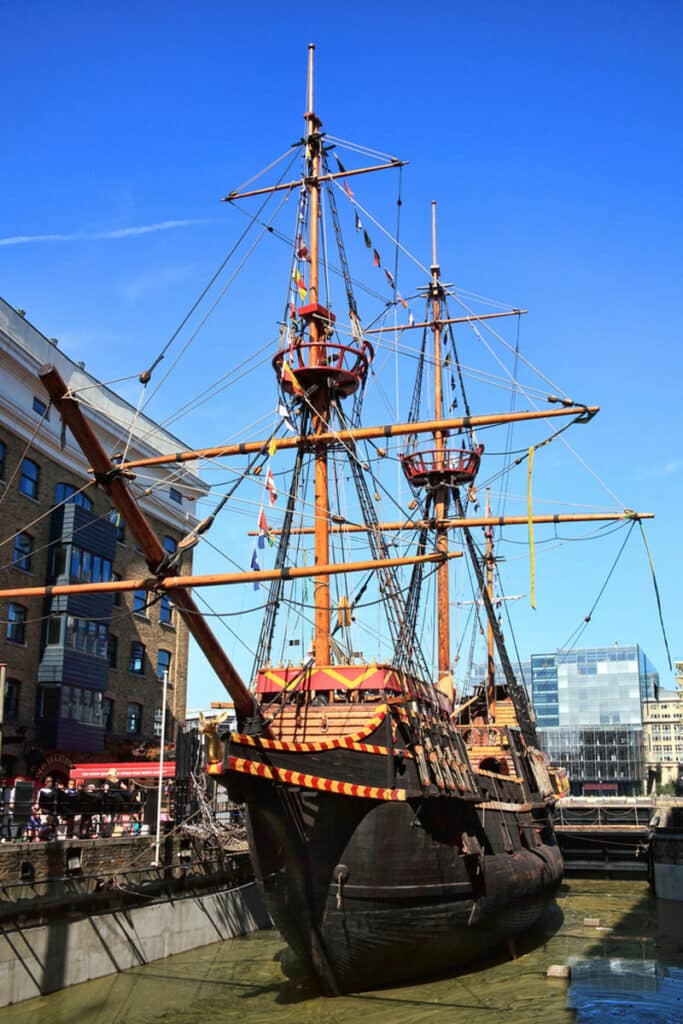
You should visit because the story behind this boat, or more specifically the boat that this one is a very accurate replica of, is up there with some of the best in history. And besides, where else are you going to see the inside of a 16th-century galleon?
The History of The Golden Hinde
The Back Story
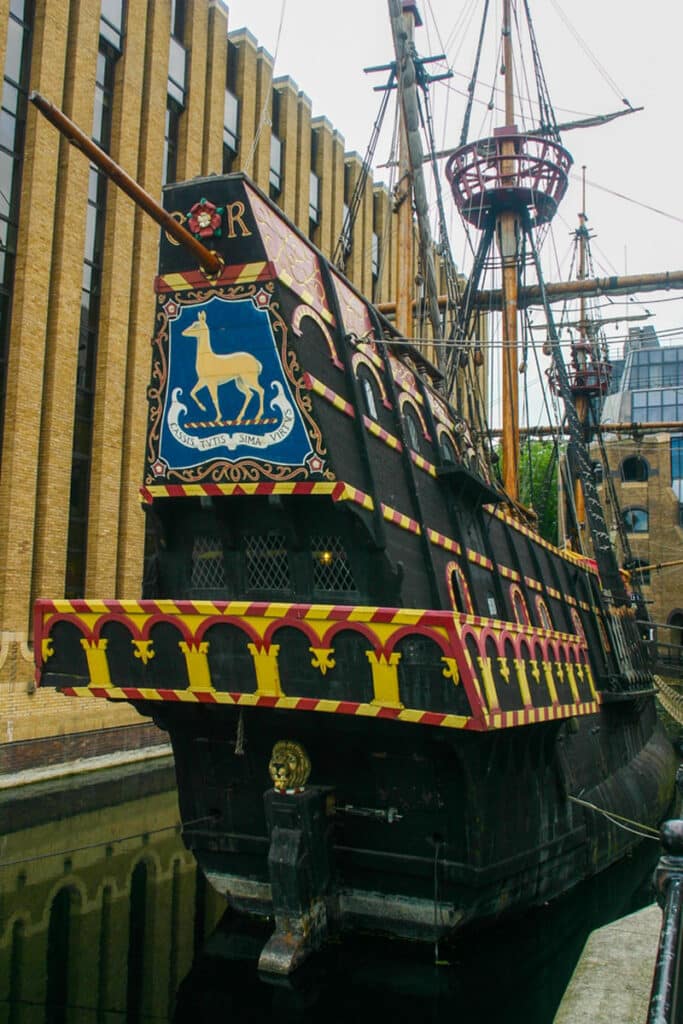
It’s the 1500s. Queen Elizabeth I is on the throne and war is brewing with the Spanish. The cause? Trade. Gold. Spice. Riches beyond your wildest imagination.
All this had come about through the Age of Discovery, a period when European explorers, thanks to advancements in navigational technology and shipbuilding, went out into the world seeking new routes to the spice-rich regions of Asia and the gold-laden hills of the New World.
England was late to the party, spurred into action by the vast wealth pouring into Spain and Portugal. It was a time of intense competition and it produced England’s most notable seafarer: Sir Francis Drake.
Drake’s Voyage
Setting Out
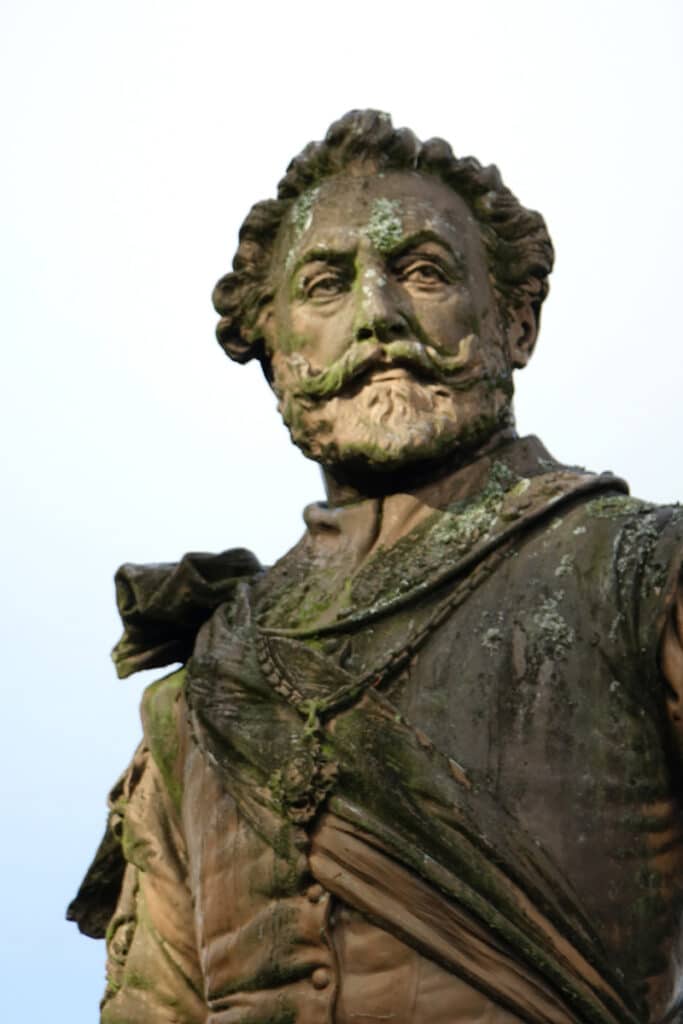
By 1577 England was now well in the game, but the nation still hadn’t completed a full circumnavigation of the globe. Not that circumnavigation was on their minds. They wanted to get rich.
Queen Elizabeth got to devising a plan. She would partly sponsor a mission for a small fleet to pass through the Straights of Magellan in South America, and up the Pacific coast.
The fleet of five ships set out from Portsmouth in 1577 under the ruse of taking a trading mission to Egypt so that Spain wouldn’t get wind of their real plan: to raid and pirate Spanish colonies in The New World. Among those was a ship called The Pelican that would go on to be very important to this story.
The Crossing
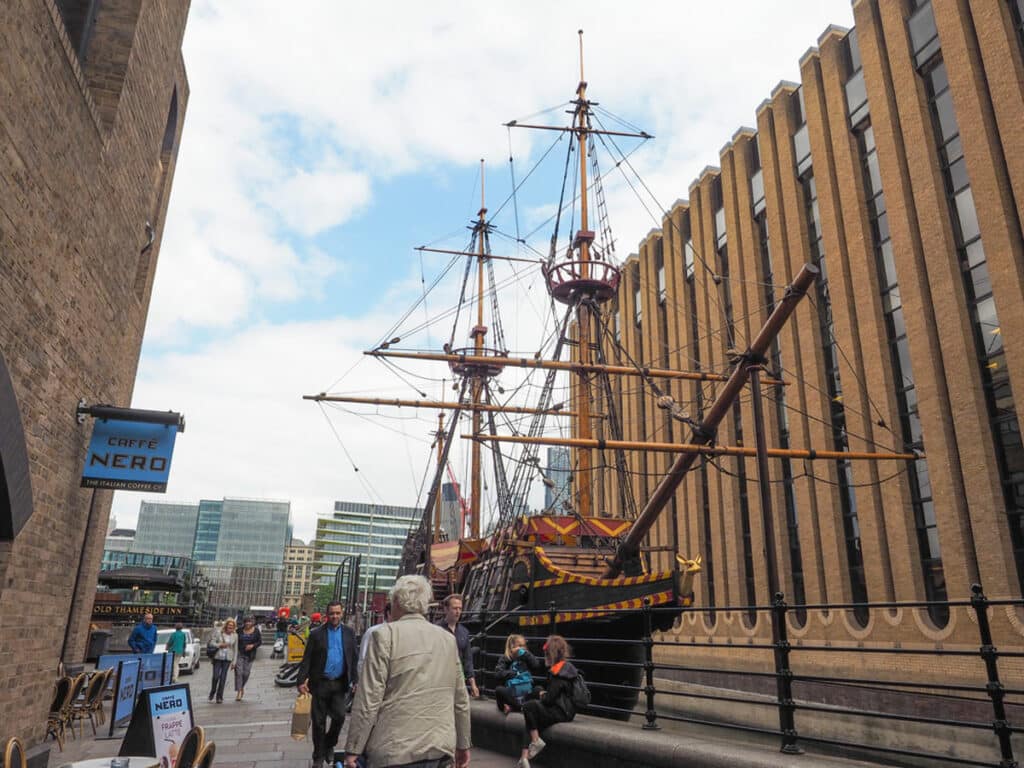
And now the going gets tough. The fleet made it across the Atlantic with no small amount of drama. Half way they ran out of water – something that would be a problem later in the voyage too – and Drake was forced to put down a mutiny and break down two ships to consolidate his force.
Despite problems, the fleet made it to the Straights of Magellan and passed through them in a record 14 days, dodging whirlpools and shallow water only to run into a storm that destroyed one of the remaining ships and separated The Pelican from The Elizabeth.
The latter ship returned to England but the Pelican Pressed on alone. It was here that Drake renamed the ship The Golden Hinde in honour of his patron, Sir Christopher Hatton, whose crest was a red deer, otherwise known as, you guessed it, a hind.
On the Run
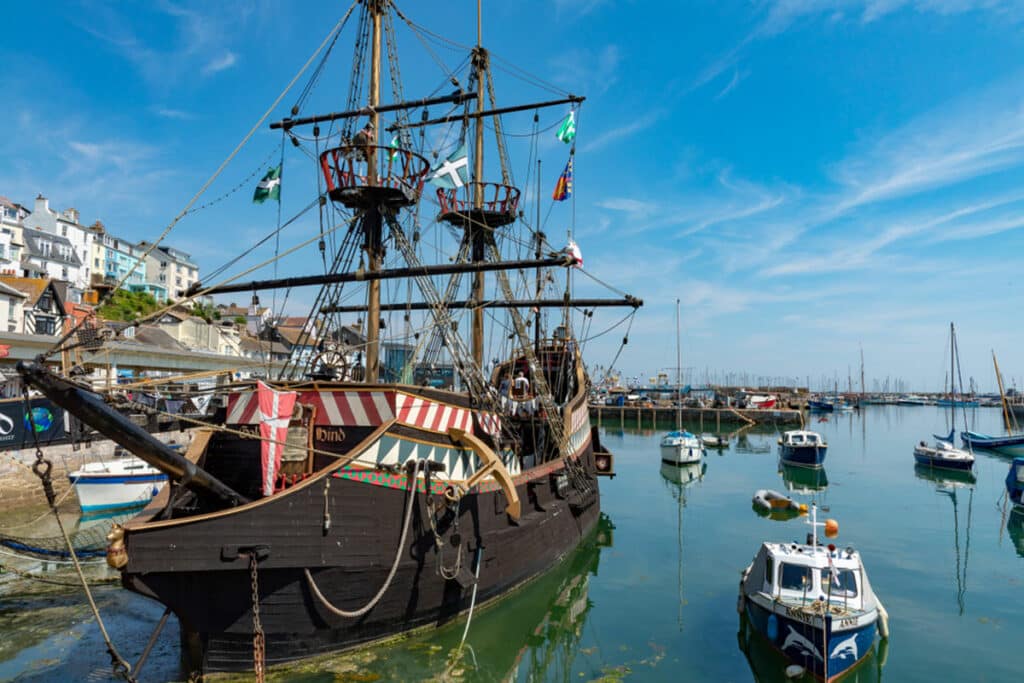
With plenty of wind in his sail (literally and metaphorically) Drake made his way up the Pacific coast of the Americas raiding towns and ships he encountered along the way until he reached either California or Oregon (the correct location is highly disputed) and settled with some natives for a while to repair The Hinde and stock up.
He now had a problem. The Spanish were after him for what he’d done in the south so he couldn’t really turn back the way he came. There was no Panama Canal back then, so Drake was faced with one choice, to cross the Pacific.
This he did, ripping off a couple of local warlords in South East Asia and docking into port on the coast of Sierra Leone with only eight pints of water left for 56 men, before getting safely back to England with his booty three years after setting off.
To the Victor, the Spoils
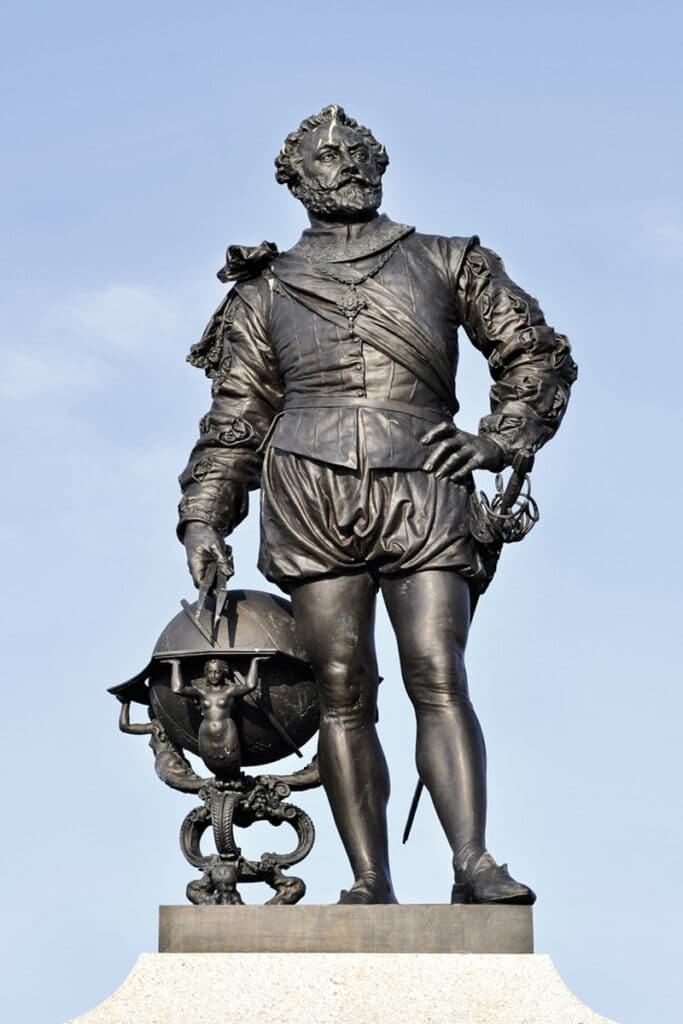
Drake’s voyage put him in the history books. He became the third man to successfully circumnavigate the earth, though arguably the first to make it all the way round as previous missions ended in death for their captains long before the fleet made it home.
He also became enormously rich, from one Spanish galleon alone he’d taken the equivalent of £480m in today’s money. Queen Elizabeth’s share of the treasure was enough to pay off the entire government’s debt and then some.
The boat that made this all possible was docked in Deptford and never sailed again. Until now…
The Replica Ship
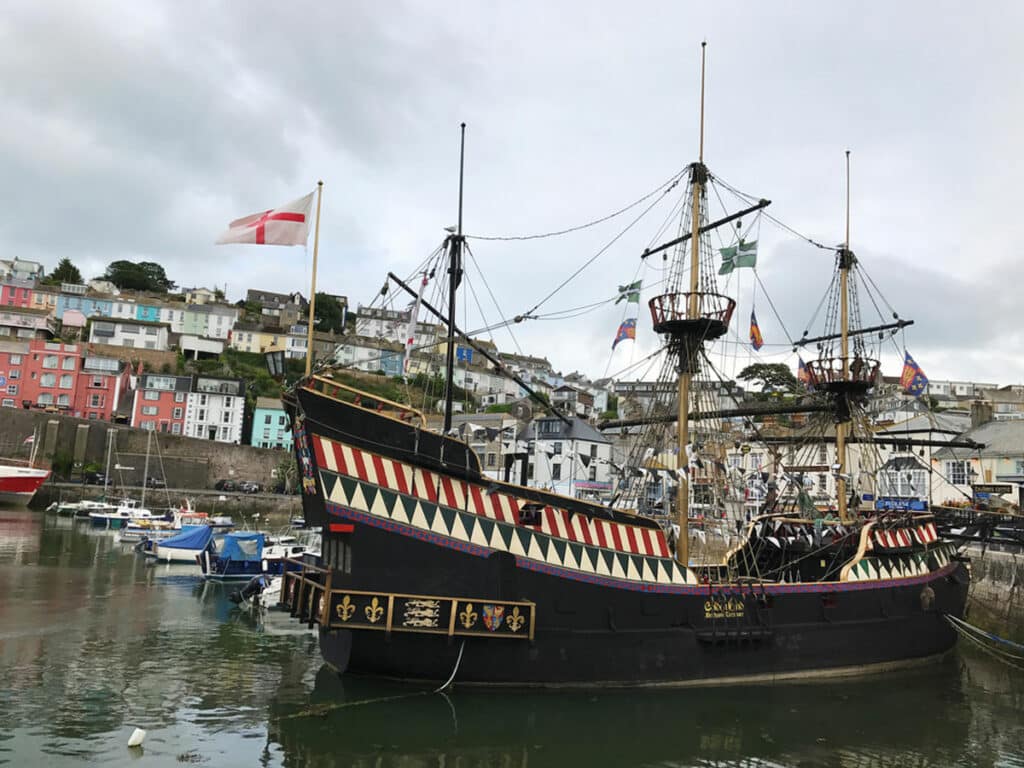
The Elizabethans weren’t as hot on preservation as we are today. The original ship rotted away many many years ago. Some smart person though, had the idea to build a replica, and it’s not without a story of its own.
The one you’ll see docked near London Bridge was built from plans and was the result of three years of research and construction. The fact that you see it docked is somewhat misleading, this ship has clocked up over 140,000 miles of sea travel, even circumnavigating the globe once herself.
Her maiden voyage was in 1974, arriving in San Francisco about six months later on the 8th of May 1975. She spent several years there before sailing to Japan, and on home, in 1979.
The Golden Hinde: Practical Information
Address: St Mary Overie’s Dock, Cathedral St, London SE1 9DE
Opening Times: 10 am – 6 pm daily
Tickets: £6 for adults and children over three, or £18 for a family of four.

